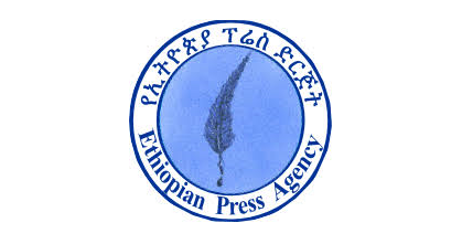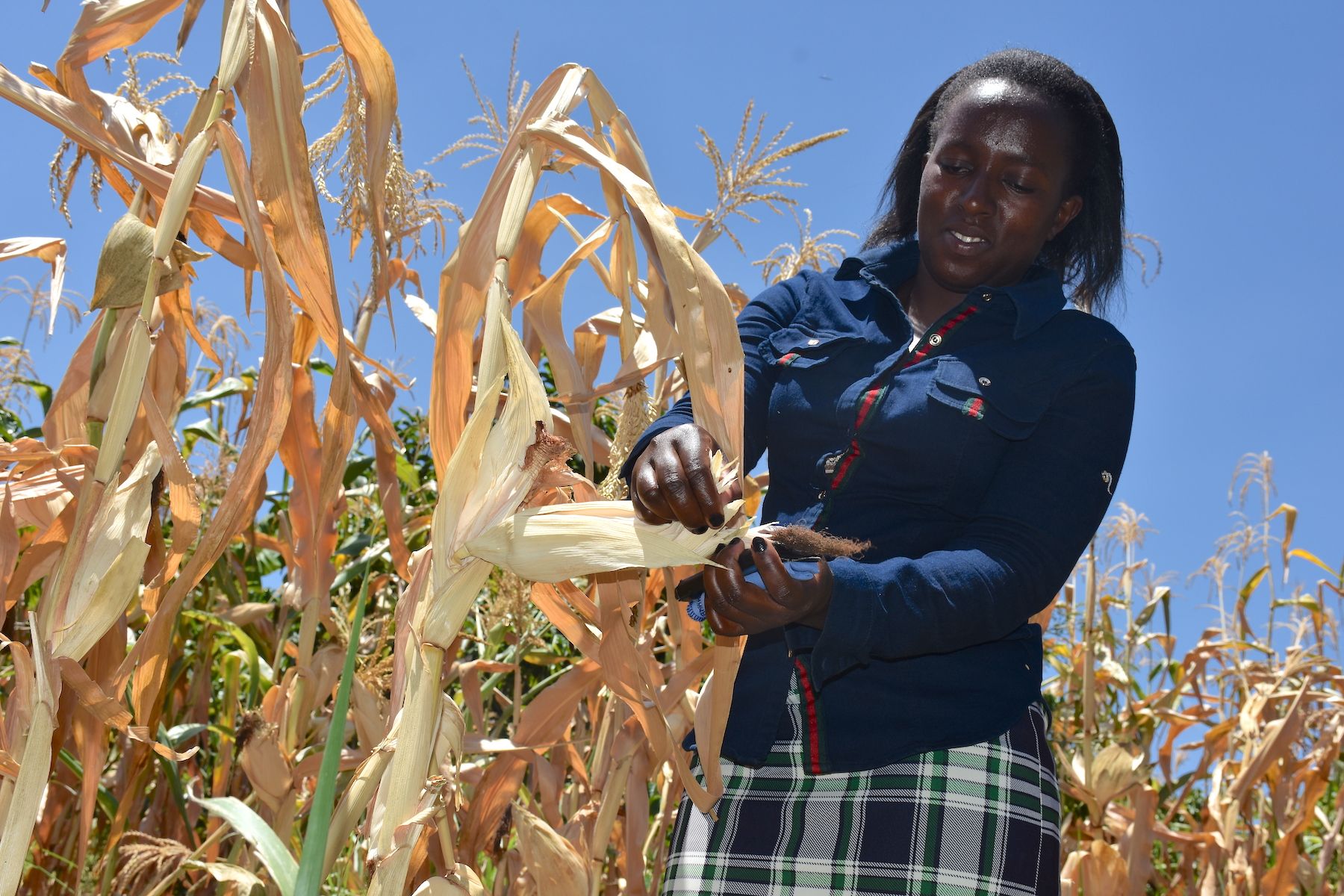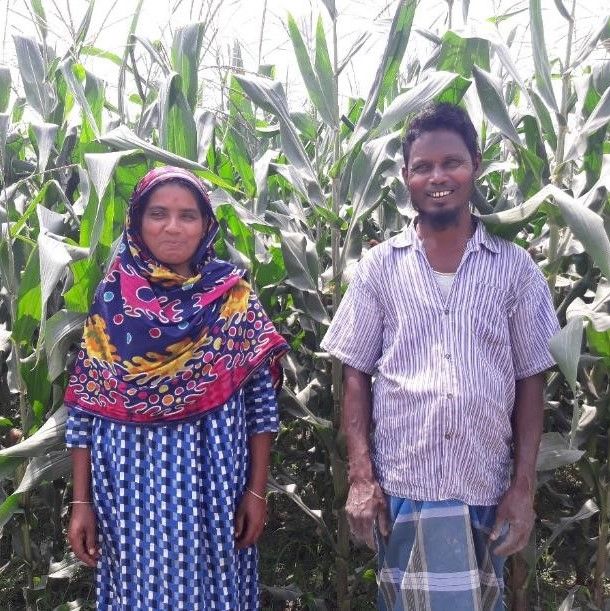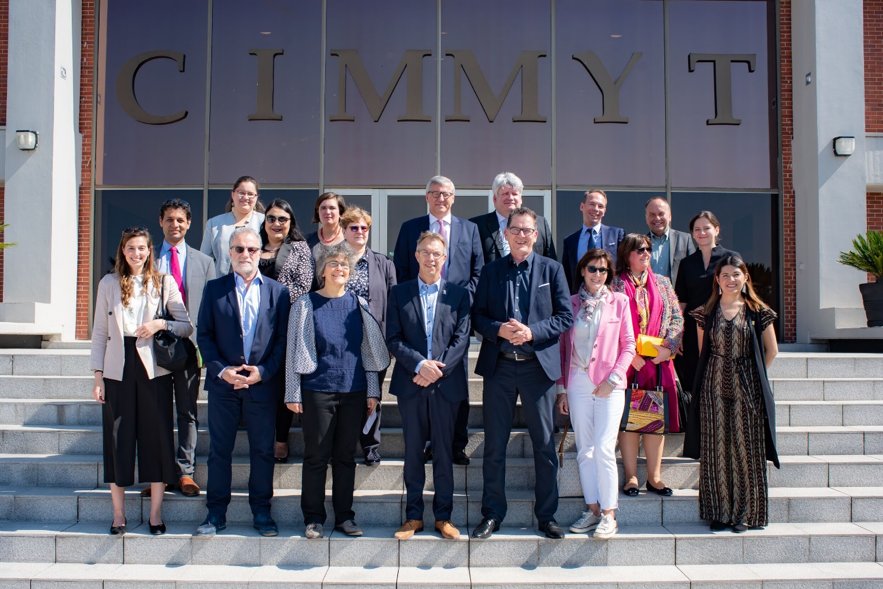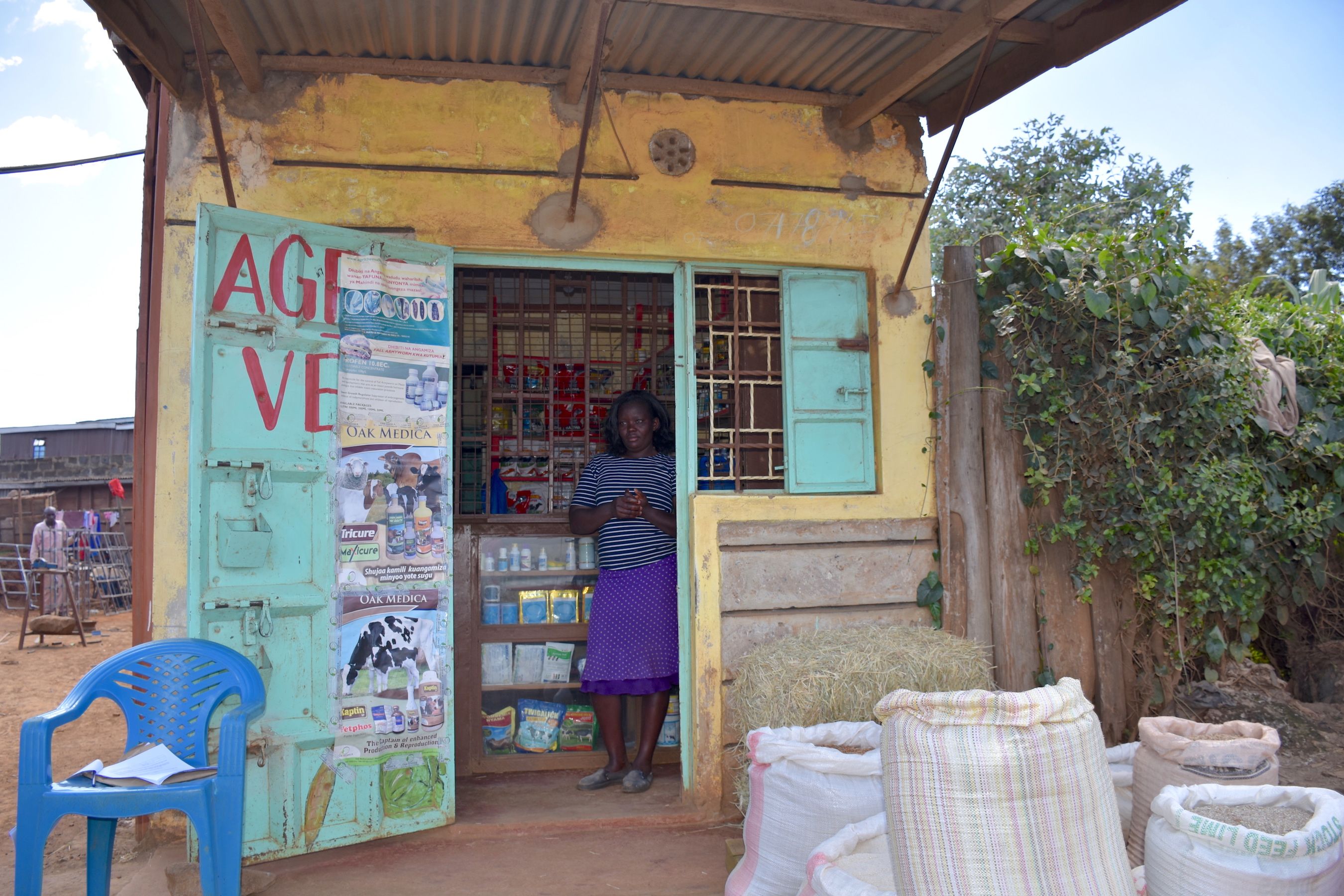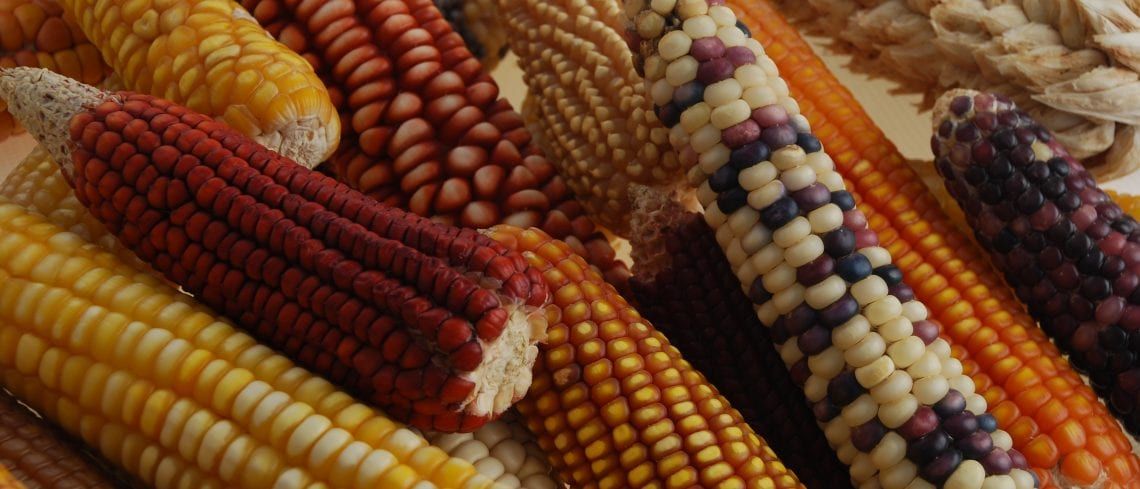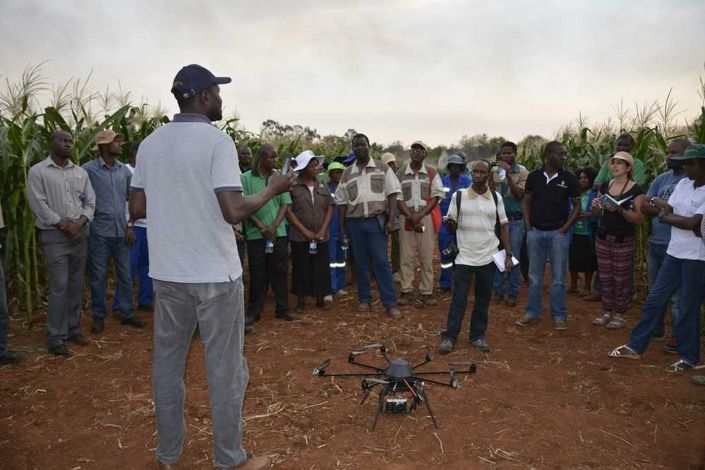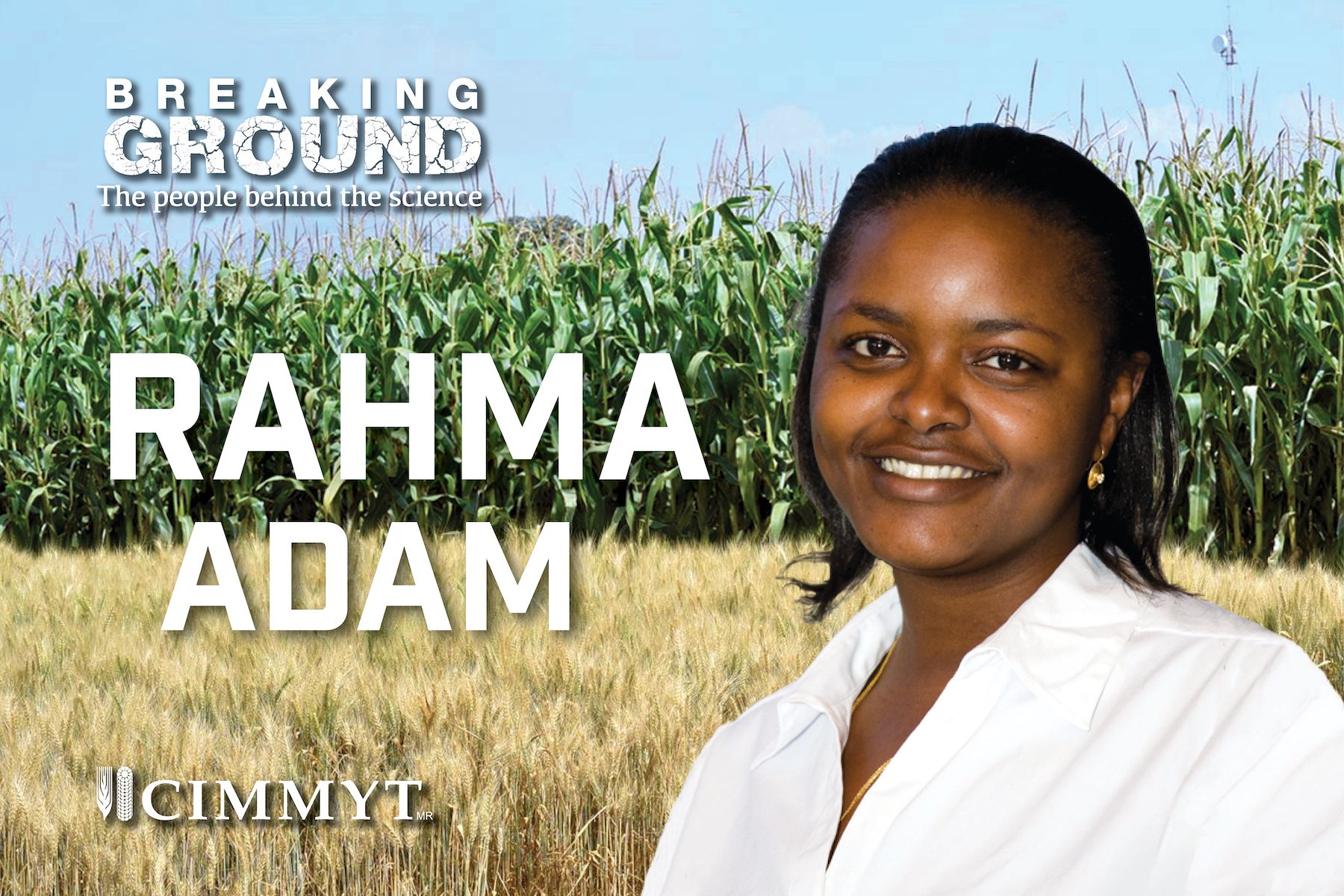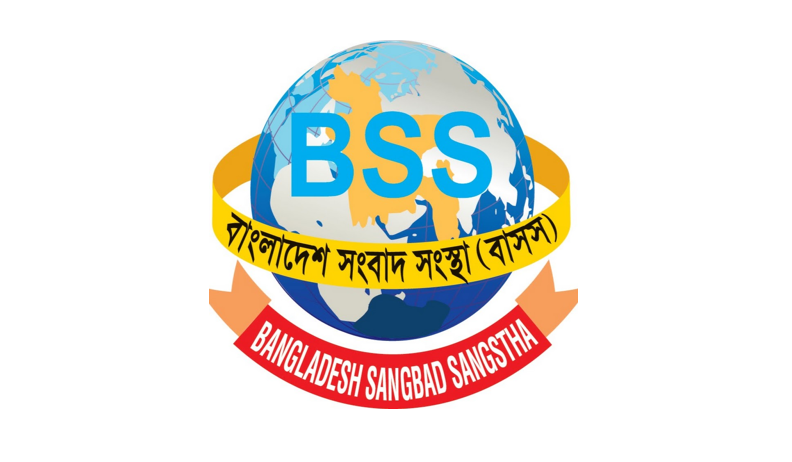Exploring young Africans’ role and engagement in the rural economy
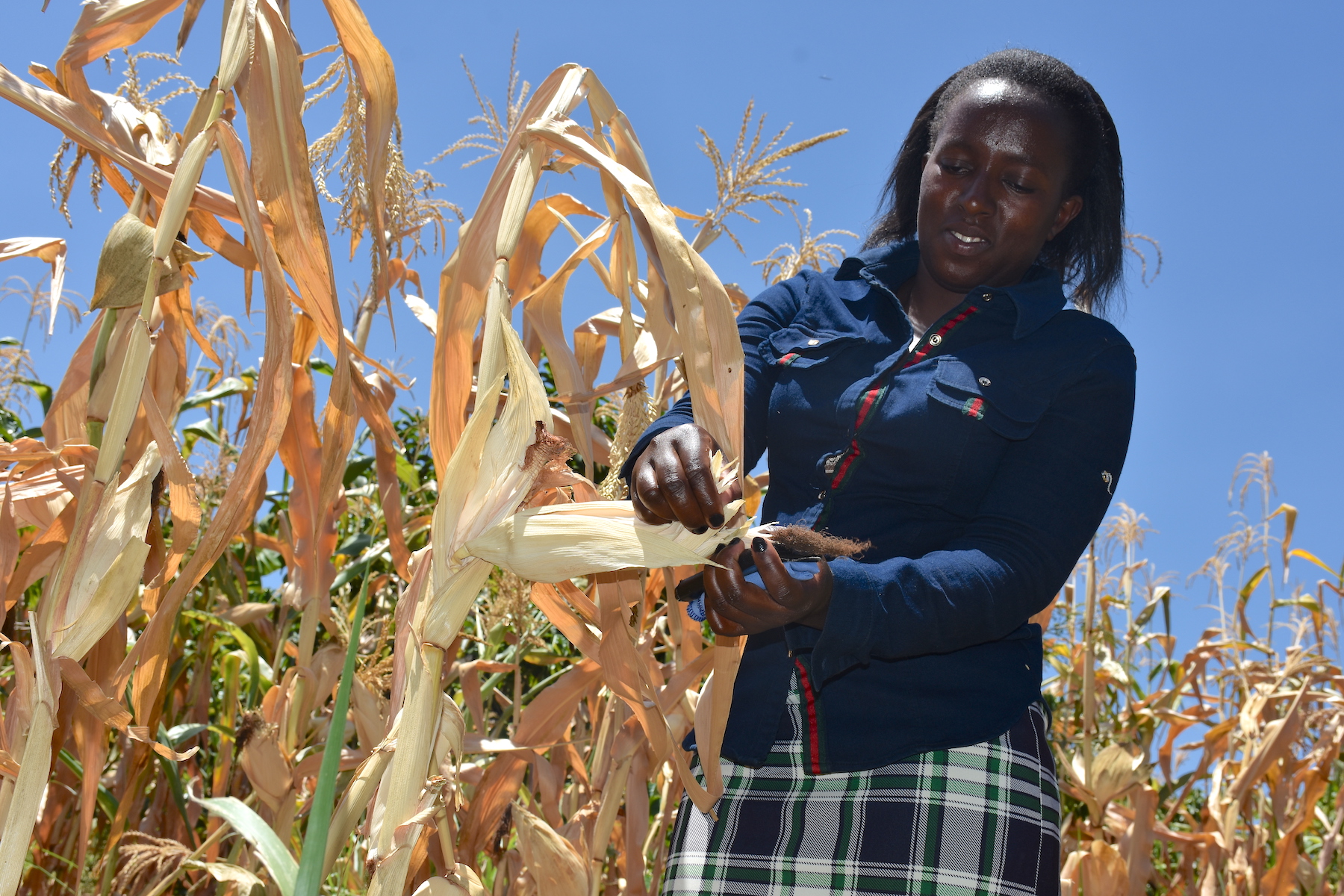
How do young rural Africans engage in the rural economy? How important is farming relative to non-farm activities for the income of young rural Africans? What social, spatial and policy factors explain different patterns of engagement? These questions are at the heart of an interdisciplinary research project, funded by the International Fund for Agricultural Development (IFAD), that seeks to provide stronger evidence for policy and for the growing number of programs in Africa that want to “invest in youth.”
One component of the Challenges and Opportunities for Rural Youth Employment in Sub-Saharan Africa project, led by the Institute of Development Studies (IDS), draws on data from the World Bank’s Living Standard Measurement Study – Integrated Surveys on Agriculture (LSMS-ISA) to develop a more detailed picture of young people’s economic activities. These surveys, covering eight countries in sub-Saharan Africa, were conducted at regular intervals and in most cases followed the same households and individuals through time. While the LSMS-ISA are not specialized youth surveys and therefore may not cover all facets of youth livelihoods and wellbeing in detail, they provide valuable knowledge about the evolving patterns of social and economic characteristics of rural African youth and their households.
“LSMS-ISA data are open access, aiming to help national governments and academics analyze the linkages between poverty and agricultural productivity in developing countries,” said Sydney Gourlay, Survey Specialist in the Development Data Group of the World Bank. She explained that LSMS-ISA datasets cover rural and urban livelihoods — including asset ownership, education, farm and non-farm incomes — and contain detailed information on farming practices and productivity. “LSMS-ISA data have untapped potential for valuable youth analyses that could lead to evidence-based youth policy reform,” Gourlay said.
To stimulate greater use of LSMS-ISA data for research on these issues, the International Maize and Wheat Improvement Center (CIMMYT), IDS, and the LSMS team of the World Bank organized a workshop for young African social scientists, hosted by CIMMYT in Nairobi from February 4 to February 8, 2019.
Early-career social scientists from Ethiopia, Ghana, Kenya, Nigeria, Uganda, and Zimbabwe explored the potential of LSMS-ISA data, identified research issues, and developed strategies to create new analyses. The workshop was also a chance to uncover potential areas for increased data collection on youth, as part of the LSMS team’s IFAD-funded initiative “Improving Data on Women and Youth.”
What does that data point represent?
The workshop stressed the importance of getting to know the data before analyzing them. As explained by World Bank senior economist Talip Kilic in The Crowd and the Cloud, “Every data point has a human story.” It is important to decipher what the data points represent and the limits within which they can be interpreted. For instance, the definition of youth differs by country, so comparative studies across countries must harmonize data from different sources.
“Because LSMS-ISA survey locations are georeferenced, it is possible to integrate spatial information from multiple sources and gain new insights about patterns of interest, as well as the drivers associated with such patterns,” said Jordan Chamberlin, spatial economics expert at CIMMYT. “For example, in all countries we’ve examined, the degree of non-farm economic engagement is strongly associated with distance from urban centers.”
Chamberlin noted that georeferencing also has limitations. For instance, to ensure privacy, LSMS-ISA coordinates for households are randomly offset by as much as 5 km. Nonetheless, diverse geospatial data from the datasets — distance to the nearest tarmac road or population density, among other information — may be integrated via the location coordinates.
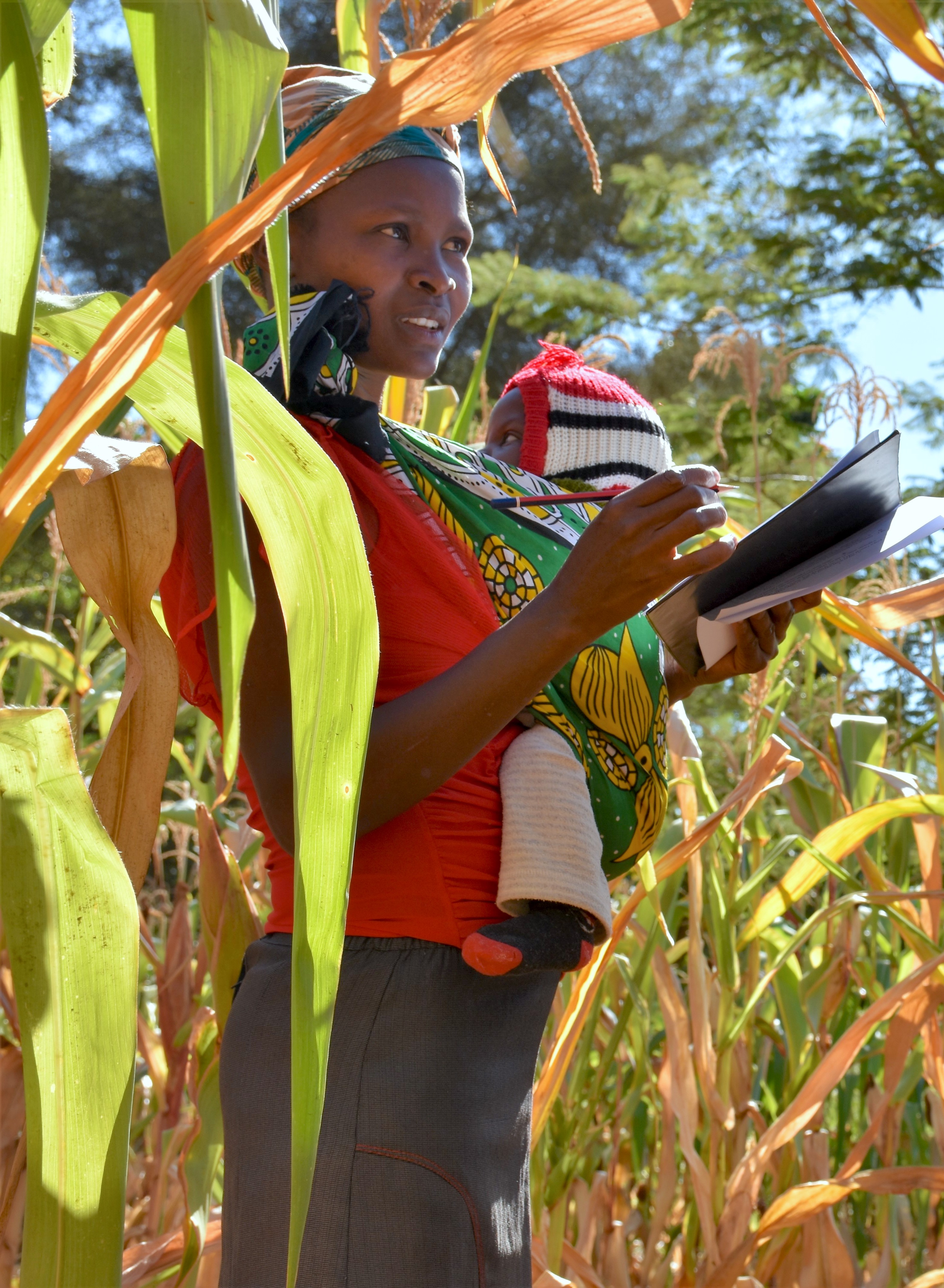
One key variable to assess farm productivity is harvested area. The LSMS team’s research has revealed high, systematic discrepancies between farmers’ self-assessments of area, GPS measurements, and compass and rope, which is considered the most accurate method. Methodological validation data from Ethiopia, Nigeria, and Tanzania show that on average farmers overestimate the area of plots smaller than 200 m2 by more than 370 percent and underestimate the size of plots larger than 2 hectares by 13 percent, relative to compass and rope measurements. Such errors can skew yield analyses and the accuracy of assessments of national agricultural research programs’ impact.
Several workshop participants expressed interest in using the LSMS dataset for studies on migration, given that it contains information about this variable. In the case of internal migrants — that is, persons who have moved to another area in the same country — LSMS enumerators will find and interview them and these migrants will continue to be included in future rounds of the panel survey. In Malawi, for example, about 93 percent of individuals were tracked between the 2010/11 and the 2013 Integrated Household Surveys. Plot characteristics — such as type of soil, input use, and crop production — include information on the person who manages the plot, allowing for identification and analysis of male and female managed plots.
Following the training, the participants have better articulated their research ideas on youth. Prospective youth studies from the group include how land productivity affects youth opportunities and whether migration induces greater involvement of women in agriculture or raises the cost of rural labor. Better studies will generate more accurate knowledge to help design more effective youth policies.
Sustainable intensification practices build resilience in Bangladesh’s charlands
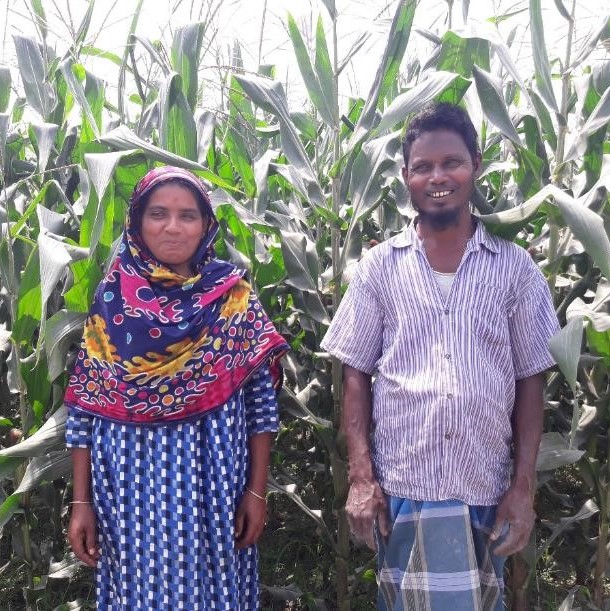
The charlands, island-like tracts of land arising from riverbeds as a result of erosion and accretion, are home to millions of Bangladesh’s most vulnerable people. The lives of these people, much like the land itself, are exposed to nature’s forces such as erosion and floods.
In Eachlirchar, an area of charland in Lakkhitari Union, Gangachara, Rangpur district, where the soil struggles to yield even rice, the fate of the marginalized char community is arbitrarily determined by the course of nature. However, mother of three Anzuma Begam is living proof of the resilience and socioeconomic development catalyzed by adopting conservation agriculture-based sustainable intensification technologies.
Promoted by the International Maize and Wheat Improvement Center (CIMMYT) through its Sustainable and Resilient Farming Systems Intensification (SRFSI) project, sustainable intensification technologies have been heralded as a major breakthrough in the fight against charland aridity since 2014. By reducing drudgery, irrigation and costs, conservation agriculture enables the soil of the charlands to produce rice and maize yields consecutively.
Given its eventual success, it is surprising that the first phase of CIMMYT’s work in Eachlirchar did not run according to plan, as the tobacco-producing community did not welcome new technologies. Begam’s husband, Hossain Ali, even rejected her initial proposal to participate in the SRFSI project’s introductory training on zero tillage, weed management and new seeds. However, in spite of her husband’s disapproval and defying patriarchal constraints, Begam stepped forward to accept the new agricultural technology.
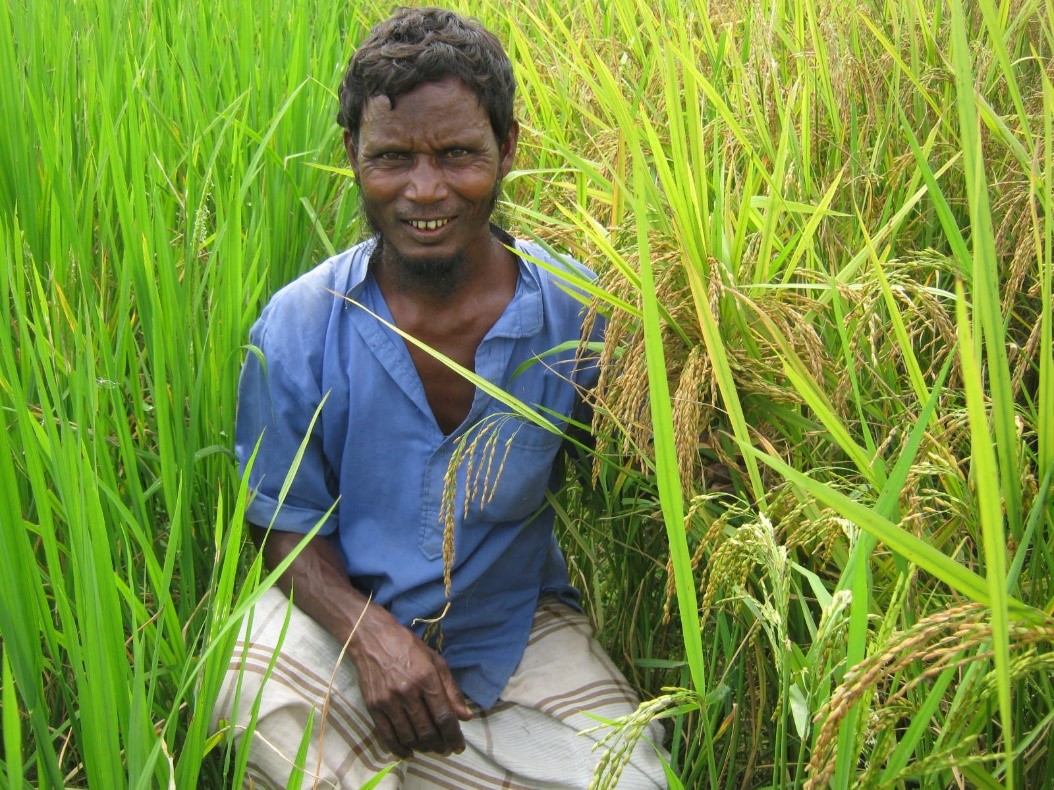
After engaging with the project, Begam decided apply conservation agriculture-based sustainable intensification practices on her small plot of land. She began to produce mechanically transplanted rice and strip-till maize. Her first harvest in 2015 deepened her understanding of the benefits of comparatively low utilization of irrigation, pesticides and labor.
Begam has since yielded a bumper maize crop using strip-till technology and her socioeconomic progress is an inspiration to her charland community. Even the floods of June 2017 failed take the smiles off her family’s faces and, in 2018, she and her family moved from a shack into a well-built tin-shaded house.
The profits from Begam’s higher yielding and more reliable maize and rice harvests have ensured access to proper education and food for her children, and her husband now helps cultivate their land using conservation agriculture technologies. “Anzuma did the right thing by not listening to my wrong decision back then in 2014,” he explains. “SRFSI showed her the right way to attain self-reliance through conservation agriculture technologies. I am proud of my wife.”
The Sustainable and Resilient Farming Systems Intensification (SRFSI) project is funded by the Australian Centre for International Agricultural Research (ACIAR).
Is a world without hunger possible, asks Germany’s minister Gerd Müller during his visit to CIMMYT

On March 4, 2019, staff from the International Maize and Wheat Improvement Center (CIMMYT) welcomed Gerd Müller, Germany’s Federal Minister of Economic Cooperation and Development (BMZ), for a short visit to CIMMYT’s global headquarters in Mexico. Before exploring the campus and sitting down to hear about CIMMYT’s latest innovations in maize and wheat research, Minister Müller challenged the scientists gathered there by asking: “Is a world with no hunger actually possible?”
“It is possible, but it will require a lot of research and development activities to get there,” replied CIMMYT’s director general, Martin Kropff.
With $3.5 billion generated in benefits annually, CIMMYT is well positioned for Minister Müller’s challenge. CIMMYT works throughout the developing world to improve livelihoods and foster more productive, sustainable maize and wheat farming. Its portfolio squarely targets critical challenges, including food insecurity and malnutrition, climate change and environmental degradation. In addition, over 50 percent of maize and wheat grown in the developing world is based on CIMMYT varieties.
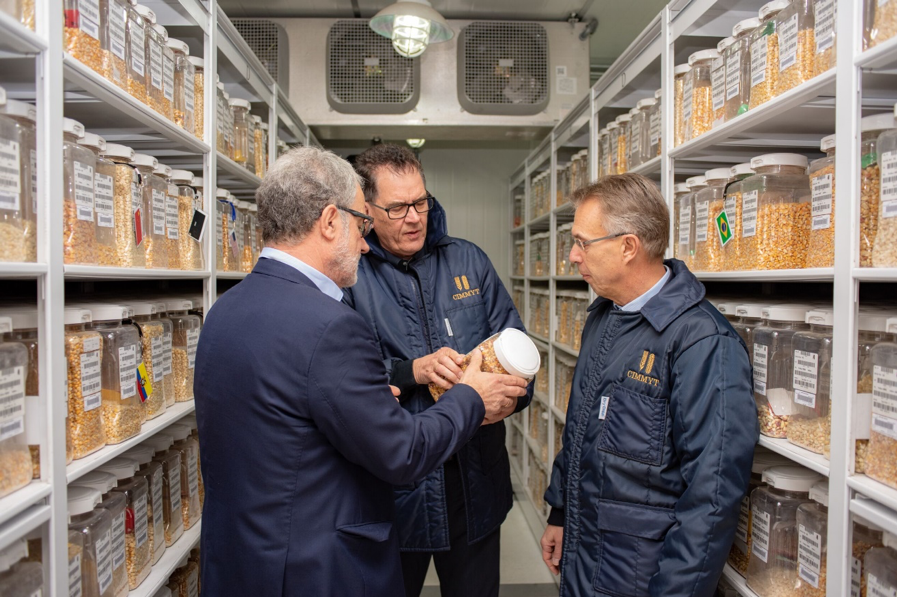
Germany has generously supported CIMMYT’s work for decades in a quest to answer this very question, which aligns with the German government’s agenda to improving food and nutrition security, the environment and livelihoods.
“CIMMYT is working to find ways to allow developing countries to grow maize and wheat on less land so that a larger percentage of it can be freed for nutritious and higher value cash crops. This requires better seeds that are adapted to biotic and abiotic stressors, smarter agronomy and machinery, which CIMMYT develops with partners,” Kropff explained.
CIMMYT works between smallholders and small companies to create an incentive on one side to grow varieties and on the other side, to increase demand for quality grain that will ultimately become the tortillas and bread on customers’ dinner tables. These sustainable sourcing and breeding efforts depend on the breathtaking diversity of maize and wheat housed at CIMMYT’s genebank, the Wellhausen-Anderson Plant Genetic Resources Center, which is supported by German funding along with solar panels that generate clean energy for the genebank.
Through funding for the CGIAR Research Program on WHEAT and the CIM Integrated Experts Program, Germany’s GIZ and BMZ have also supported CIMMYT research into gender and innovation processes in Africa, Central and South Asia, enhancing gender awareness in both projects and rural communities and mainstreaming gender-sensitive approaches in agricultural research. As a result, CIMMYT researchers and partners have increased gender equality in wheat-based cropping systems in Ethiopia, reduced the burden of women’s wheat cleaning work in Afghanistan, and hosted a series of training courses promoting the integration of gender awareness and analysis in research for development.
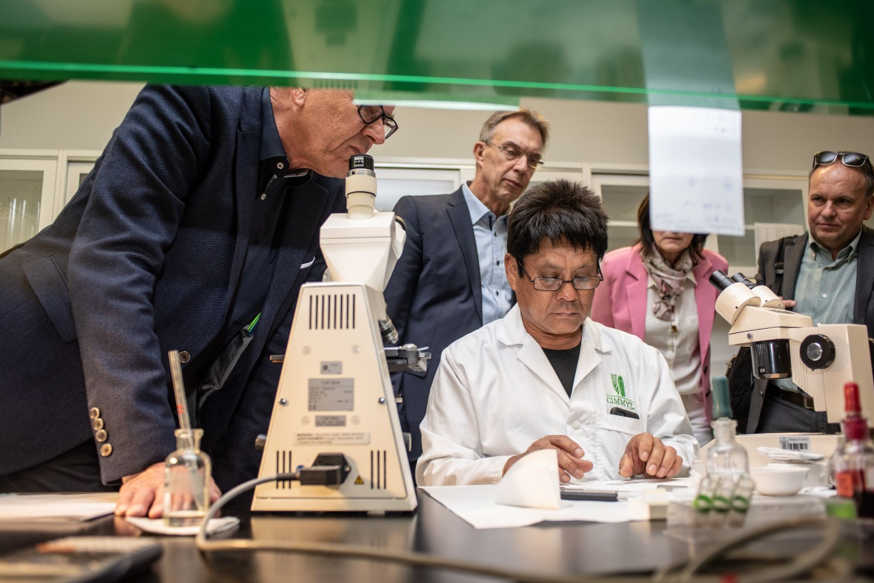
In addition, the CIM Integrated Experts program has allowed CIMMYT to increase its efforts to scale up agricultural innovations and link research to specific development needs. With support from GIZ and in collaboration with the PPPLab, in 2018 CIMMYT researchers developed a trial version of the Scaling Scan, a tool which helps researchers to design and manage scaling at all project phases: at the beginning, during and after implementation.
CIMMYT is committed to improving livelihoods and helping farmers stay competitive through increasing labor productivity and reducing costs. CIMMYT’s mechanization team works to identify, develop, test and improve technologies that reduce drudgery and enable smallholders in Mexico, sub-Saharan Africa and South Asia to adopt sustainable intensification practices, which require greater farm power and precision. In Ethiopia, CIMMYT has an ongoing collaboration with the GIZ/BMZ green innovation center — established as part of the ONE WORLD – No Hunger initiative — and is working with GIZ in Namibia to provide knowledge, expertise and capacity building on conservation agriculture. This includes the organization of training courses to mechanics and service providers on everything from the use to the repair of machinery and small-scale mechanization services.
“We’re on a mission to improve livelihoods through transforming smallholder agriculture, much of which depends on empowering women, scaling, market development and pushing for policies that would create the right incentives. Partnerships with local and international stakeholders such as Germany are at the core of CIMMYT’s operations and allow for us to have global impact,” said Kropff.
More photos of the visit are available here.

Solving the “last mile” challenge of maize seeds

Agrodealers play a pivotal role in delivering the gains of the green revolution to millions of smallholders in Africa. Reaching even the most remote corners of the continent, they give farmers access to agricultural inputs and services.
So far, seed systems research has mainly focused on the factors influencing farmers’ adoption of or seed companies’ investment in new varieties. However, little is known about independent agrodealers, who play an important role in the “last mile” of seed systems, distributing improved maize seeds and fertilizers as well as giving agronomic advice. There is a gap of knowledge about who they are, their needs and constraints, and the ways in which they secure and develop their businesses.
Understanding how to better support agrodealers is important for the International Maize and Wheat Improvement Center (CIMMYT), to ensure that new varieties reach the largest possible number of farmers. Under the Stress Tolerant Maize for Africa (STMA) project, CIMMYT has launched a new research effort to better understand agrodealers in Kenya, with a specific focus on maize seed marketing.
Researchers are now testing the tools and expect to begin field work in March 2019, during the next maize planting season. “We want to collect detailed quantitative and qualitative data about the way agrodealers outsource and choose their maize varieties, and how they market these seeds to farmers,” explained CIMMYT associate scientist Pieter Rutsaert, who leads the study. This research will help government agencies, NGOs and funders to design better interventions related to agrodealers, for greater and more sustainable impact.

The million-shilling question
The way questions are selected and phrased, and data collected, is critical. “Figuring out how to ask the right question to the right person is a hard business, especially when we ask agrodealers to evaluate their own performance,” recognized Rutsaert. For example, it could be challenging to estimate the importance of maize seed sales if owners are hesitant to provide details about their businesses to outsiders. Anticipating the challenges of collecting reliable and comparable data, Rutsaert’s team will use visual tools, like illustrated cards, to facilitate conversations with interviewees. They will also use innovative exercises, like the shop investment game, where owners are asked how they would invest one million Kenyan shillings (about US$10,000).
Standing behind the counter of her shop, selling bags of feeding supplements for dairy cattle and small pesticide bottles on dusty shelves, Philomena Muthoni Mwangi explained she had run out of maize seeds for sale. This small agrodealer in the village of Ngarariga, in central Kenya, will restock her maize seeds from a big agrovet shop nearby at the onset of the rainy season.
This is quite common, as agrodealers do not take risks when it comes to selling new varieties. Not knowing the future demand, leftover seed stock after the planting season would severely reduce Mwangi’s potential profit, as margins per bag are low. To address this issue, CIMMYT researchers will conduct an intercept farmer survey in the coming weeks, to better understand what farmers look for when buying maize seeds.
Agrodealers are not a homogeneous group. Ranging from large one-stop shops to small shacks, their business models, seed marketing strategy and type of clients may differ a lot. This study will provide useful insights to design targeted seed scaling strategies that consider all kinds of agrodealers, moving away from a one-size-fits-all approach.
The Stress Tolerant Maize for Africa (STMA) project is funded by the Bill & Melinda Gates Foundation and the United States Agency for International Development (USAID).
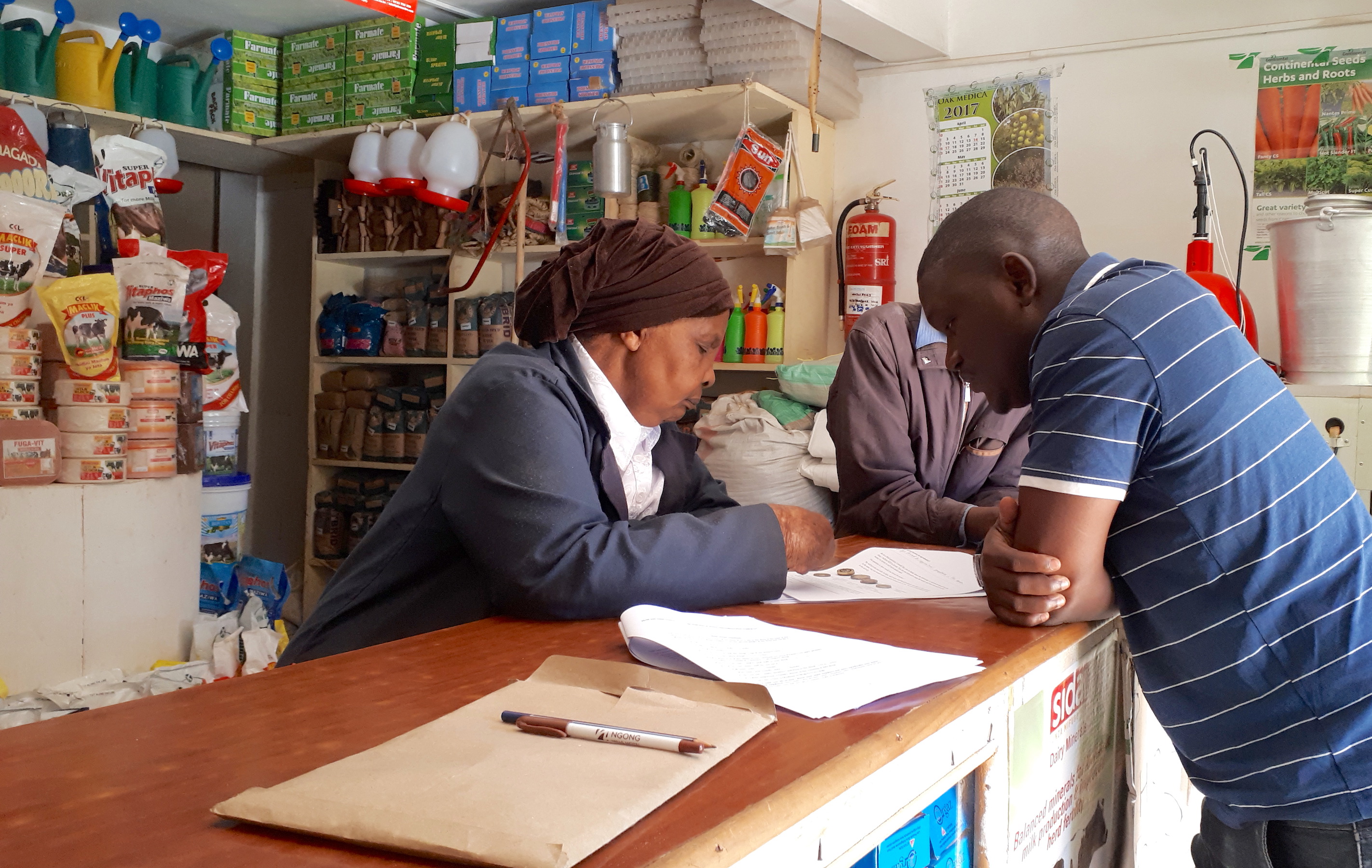
The Molecular Maize Atlas encourages genetic diversity
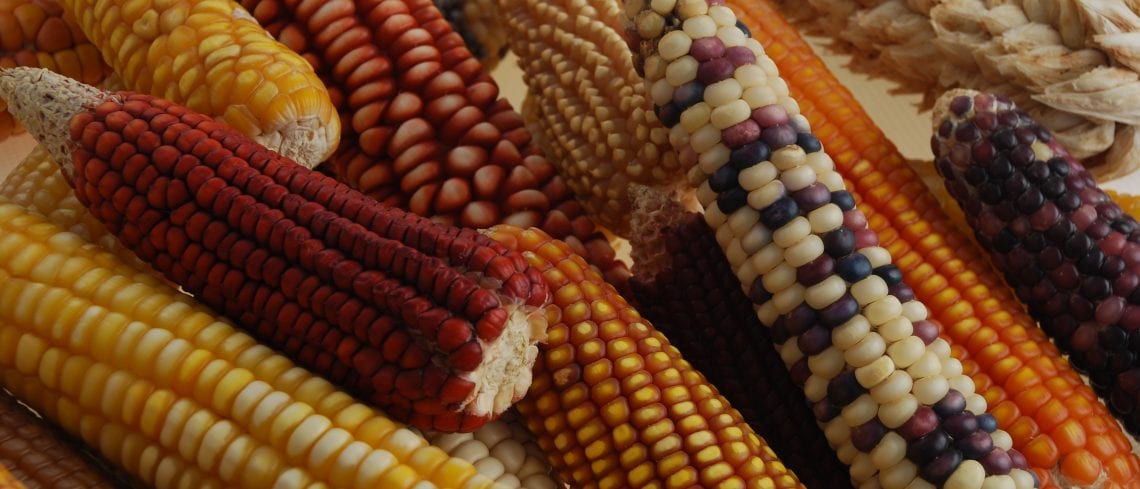
Imagine walking through a grocery store, doing your weekly shopping. Everything seems normal, but as you pick up a can, there’s no label. There’s nothing to tell you what the product is, and now you can’t reliably choose anything to eat this week.
Now switch gears and imagine a germplasm bank. Without the right labeling on these different varieties, it’s difficult to tell what’s new and what’s already been discovered when working on new research projects.
That’s where the Molecular Maize Atlas steps into play.
About nine years ago, the International Maize and Wheat Improvement Center (CIMMYT) started an initiative called the Seeds of Discovery (SeeD). This initiative facilitates easier access to and use of maize and wheat genetic resources.
SeeD achieves impact through five main components: genotyping, phenotyping, software tools, pre-breeding and capacity building.
“One of the aims of Seeds of Discovery was to best characterize germplasm,” says Sarah Hearne, a molecular geneticist and maize lead of SeeD. “At CIMMYT, our international germplasm bank holds in trust one of the largest and most diverse publicly available maize collections in the world.”
However, Hearne says this germplasm bank used to look like a grocery store without any labels or without labels that would allow someone to select a can of value. To combat this, SeeD decided to work on a labeling process for the germplasm bank: the Molecular Maize Atlas.
The Molecular Maize Atlas is an information platform that brings genotypic data resources and associated tools together. This genotypic data provides unifying information across landraces and acts as a common backbone, which other valuable information, like phenotypic data, can be added to.
Read the full article on SeedWorld.
Support groups open women’s access to farm technologies in northeast India
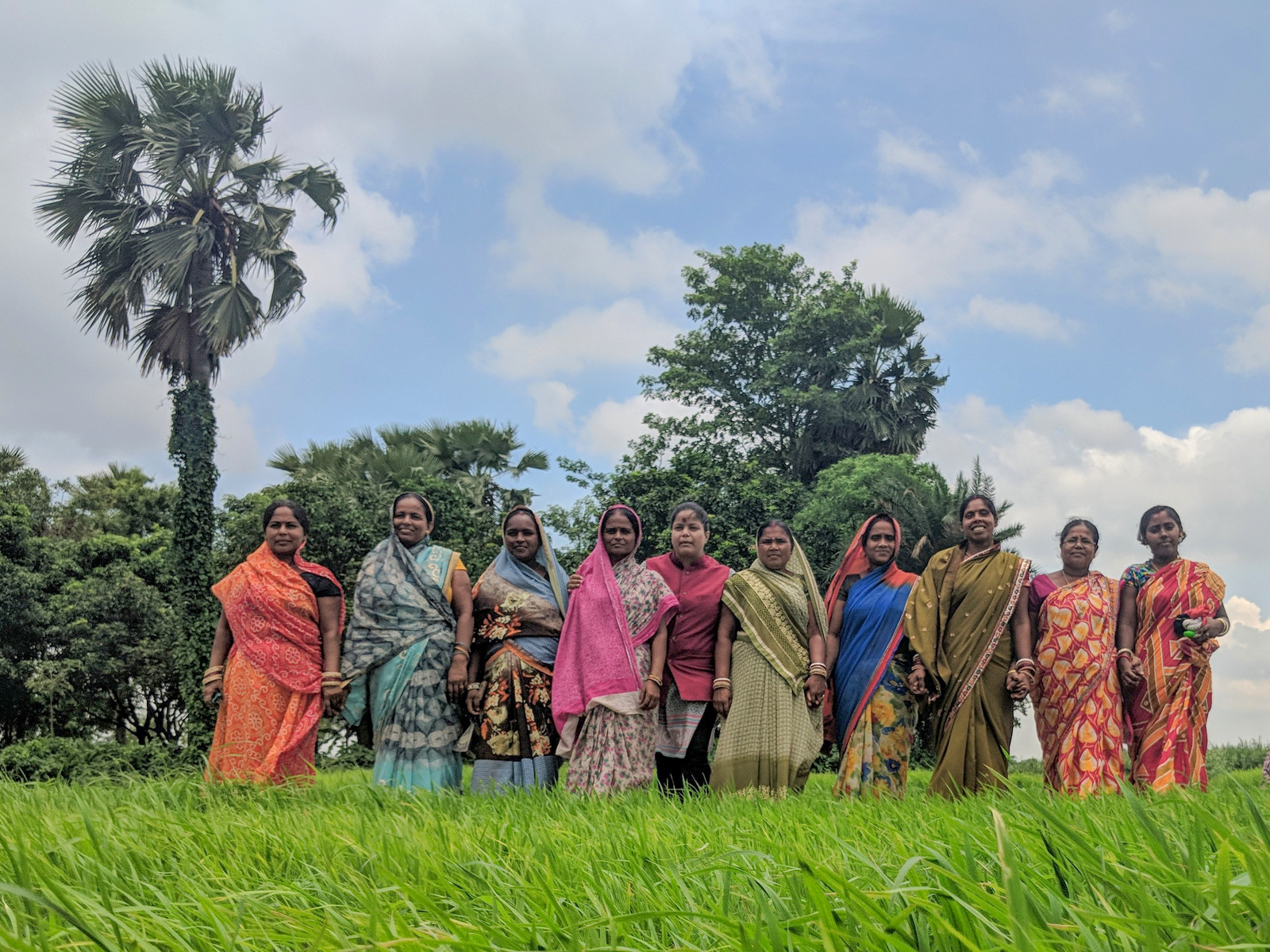
Self-help groups in Bihar, India, are putting thousands of rural women in touch with agricultural innovations, including mechanization and sustainable intensification, that save time, money, and critical resources such as soil and water, benefiting households and the environment.
The Bihar Rural Livelihoods Promotion Society, locally known as Jeevika, has partnered with the Cereal Systems Initiative for South Asia (CSISA), led by the International Maize and Wheat Improvement Center (CIMMYT), to train women’s self-help groups and other stakeholders in practices such as zero tillage, early sowing of wheat, direct-seeded rice and community nurseries.
Through their efforts to date, more than 35,000 households are planting wheat earlier than was customary, with the advantage that the crop fully fills its grain before the hot weather of late spring. In addition, some 18,000 households are using zero tillage, in which they sow wheat directly into unplowed fields and residues, a practice that improves soil quality and saves water, among other benefits. As many as 5,000 households have tested non-flooded, direct-seeded rice cultivation during 2018-19, which also saves water and can reduce greenhouse gas emissions.
An autonomous body under the Bihar Department of Rural Development, Jeevika is also helping women to obtain specialized equipment for zero tillage and for the mechanized transplanting of rice seedlings into paddies, which reduces women’s hard labor of hand transplanting.
“Mechanization is helping us manage our costs and judiciously use our time in farming,” says Rekha Devi, a woman farmer member of Jeevika Gulab self-help group of Beniwal Village, Jamui District. “We have learned many new techniques through our self-help group.”
With more than 100 million inhabitants and over 1,000 persons per square kilometer, Bihar is India’s most densely-populated state. Nearly 90 percent of its people live in rural areas and agriculture is the main occupation. Women in Bihar play key roles in agriculture, weeding, harvesting, threshing, and milling crops, in addition to their household chores and bearing and caring for children, but they often lack access to training, vital information, or strategic technology.
Like all farmers in South Asia, they also face risks from rising temperatures, variable rainfall, resource degradation, and financial constraints.
Jeevika has formed more than 700,000 self-help groups in Bihar, mobilizing nearly 8.4 million poor households, 25,000 village organizations, and 318 cluster-level federations in all 38 districts of Bihar.
The organization also fosters access for women to “custom-hiring” businesses, which own the specialized implement for practices such as zero tillage and will sow or perform other mechanized services for farmers at a cost. “Custom hiring centers help farmers save time in sowing, harvesting and threshing,” said Anil Kumar, Program Manager, Jeevika.
The staff training, knowledge and tools shared by CSISA have been immensely helpful in strengthening the capacity of women farmers, according to D. Balamurugan, CEO of Jeevika. “We aim to further strengthen our partnership with CSISA and accelerate our work with women farmers, improving their productivity while saving their time and costs,” Balamurugan said.
CSISA is implemented jointly by the International Maize and Wheat Improvement Center (CIMMYT), the International Food Policy Research Institute (IFPRI) and the International Rice Research Institute (IRRI). It is funded by the Bill & Melinda Gates Foundation and the United States Agency for International Development (USAID).
Digital imaging tools make maize breeding much more efficient

To keep up with growing maize demand, breeders aim at optimizing annual yield gain under various stress conditions, like drought or low fertility soils. To that end, they identify the genetic merit of each individual plant, so they can select the best ones for breeding.
To improve that process, researchers at the International Maize and Wheat Improvement Center (CIMMYT) are looking at cost-effective ways to assess a larger number of maize plants and to collect more accurate data related to key plant characteristics. Plant phenotyping looks at the interaction between the genetic make-up of a plant with the environment, which produces certain characteristics or traits. In maize, for example, this may manifest in different leaf angles or ear heights.
Recent innovations in digital imagery and sensors save money and time in the collection of data related to phenotyping. These technologies, known as high-throughput phenotyping platforms, replace lengthy paper-based visual observations of crop trials.
Authors of a recent review study on high-throughput phenotyping tools observe that obtaining accurate and inexpensive estimates of genetic value of individuals is central to breeding. Mainassara Zaman-Allah, an abiotic stress phenotyping specialist at CIMMYT in Zimbabwe and one of the co-authors, emphasizes the importance of improving existing tools and developing new ones. “Plant breeding is a continuously evolving field where new tools and methods are used to develop new varieties more precisely and rapidly, sometimes at reduced financial resources than before,” he said. “All this happens to improve efficiency in breeding, in order to address the need for faster genetic gain and reduction of the cost of breeding.”
“Under the Stress Tolerant Maize for Africa (STMA) project, we are working on implementing the use of drone-based sensing, among other breeding innovations, to reduce time and cost of phenotyping, so that the development of new varieties costs less,’’ said Zaman-Allah. “The use of drones cuts time and cost of data collection by 25 to 75 percent compared to conventional methods, because it enables to collect data on several traits simultaneously — for example canopy senescence and plant count,” he explained.
Another great innovation developed under this CIMMYT project is what Zaman-Allah calls the ear analyzer. This low-cost digital imaging app allows to collect maize ear and kernel trait data 90 percent faster. This implies higher productivity and rigor, as more time is dedicated to data analysis rather than time spent on data collection. Using digital image processing, the ear analyzer gives simultaneous data of more than eight traits, including ear size and number, kernel number, size and weight.

Some national agricultural research systems and NGOs have adopted this digital imagery tool to better assess maize yields in farmers’ fields. For instance, CIMMYT and GOAL have used this tool to assess the extent of fall armyworm impact on maize crops yield in eastern Zimbabwe.
Scientists are exploring the use of different sensors for phenotyping, such as Red, Green and Blue (RGB) digital imaging or Light Detection and Ranging (LIDAR) devices. Infrared thermal and spectral cameras could lead to further progress towards faster maize breeding.
Such sensors can help collect numerous proxy data relating to important plant physiological traits or the plant environment, like plant height and architecture, soil moisture and root characteristics. This data can be used to assess the maize crop yield potential and stress tolerance.
Such breeding innovations are also making maize research more responsive to climate change and emerging pests and diseases.
Breaking Ground: Rahma Adam unleashes the agricultural productivity of Africa’s women and youth
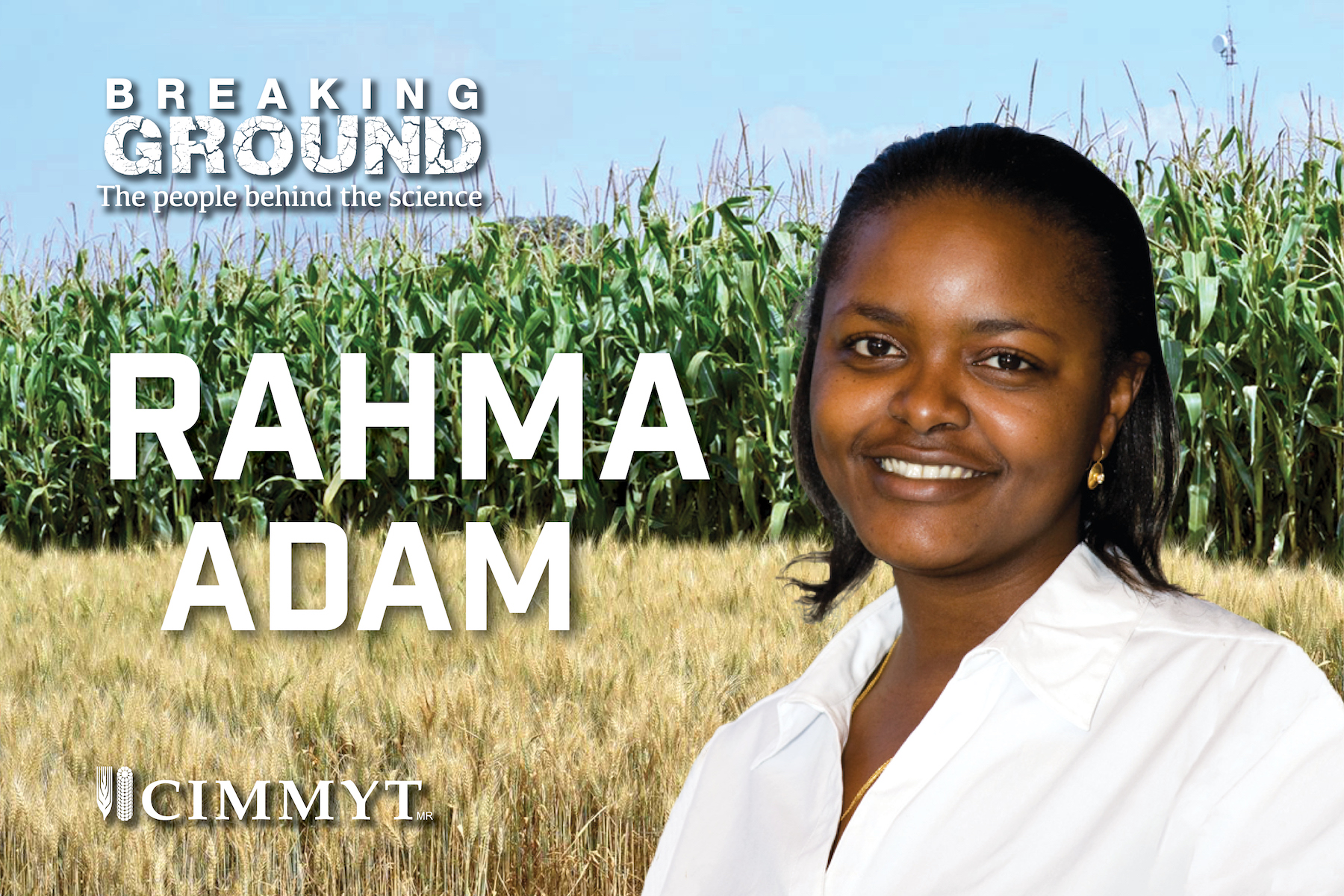
Despite great innovations in African agriculture in recent years, much of the continent still struggles to feed itself. With the population growing at an unprecedented rate, avoiding fatal food insecurity lies in the ability to maximize agricultural capacity.
Sociologist Rahma Adam believes there is one vital resource that remains untapped. One which, when unleashed, will not only increase food security but also boost livelihoods: the human capital of Africa’s women and youth.
“Smallholder production and livelihoods are stifled by the unequal access woman and youth have to farming information and resources, compared to men,” said Adam. “Limited access to land and technical services inhibits their agricultural productivity and holds back the food security of all.”
As a gender and development specialist with the International Maize and Wheat Improvement Center (CIMMYT), Adam adds a social inclusion lens to Africa’s development dialogue. Her research asks questions as to why women and youth are overrepresented among the poor and how to improve their access to agricultural training and markets.
The interaction between biology and anthropology has fascinated Adam since she was an undergraduate student at Macalester College. However, it was not until researching women and men in the local food markets of her native Dar es Salaam, Tanzania — as part of an exercise for her master’s degree in Public Policy at Harvard University — that she realized how social equity could improve the livelihoods of all African farmers.
“Working alongside farming women, I saw first-hand the disproportionate number of challenges they face to overcome poverty, gather finance for inputs, produce enough food to sustain a family and improve their livelihoods. However, I also saw their potential,” Adam explained.
Inspired to tackle these complex issues, she got her doctoral degree in rural sociology, with a focus on agriculture, gender and international development, from Pennsylvania State University. Following an early career with nonprofits and the World Bank, she joined CIMMYT as a gender and development specialist in 2015.
Since then, Adam has led research on how best to lift the agricultural productivity of women and youth to its full potential. Working with the Sustainable Intensification for Maize-Legumes Cropping Systems for Food Security in Eastern and Southern Africa (SIMLESA) project, she analyzed the role of gender and social inclusion in maize and legume value chains in Ethiopia, Kenya, Mozambique and Tanzania. She also identified intervention points to achieve gender and age equity across various nodes from field to plate, for example among producers, agrodealers, traders, processors and breeders.
“Promoting women and youth participation in agricultural value chains improves food security and livelihoods,” she explained. “Allowing these groups to have a voice and encouraging their leadership in farmer groups promotes their participation in agriculture.”
Partnerships for social inclusion
In eastern and southern Africa’s maize and legume farming systems, research shows that in most cases men have the final decision over maize crop production. Women have increased decision-making power regarding certain legumes, such as cowpeas and groundnuts, as they are mostly only for household consumption.
Adam’s work with SIMLESA found that promoting women’s participation in the production of legumes as cash crops is an opportunity to empower them, increase their household income and their food security.
Connecting women and youth to value chains through Agricultural Innovation Platforms improves their access to markets, credit, farming information and capacity development, she said. These platforms bring together farmers with extension workers, researchers, agrodealers, and NGO practitioners, so they can work together to improve maize and legume conservation agriculture-based sustainable intensification.
“It is important policy and development decision makers see that research demonstrates entry points to encourage women and youth to take an active role in value chains and improve productivity,” Adam said.
“You don’t want your research to sit on a shelf. This is why science policy dialogues — like the SIMLESA local, national and regional policy forums taking place this year — are important to ensure that research is introduced into the political landscape.”
An inclusive approach to research
Research must be designed and implemented in a way that women and men, including youth, can participate in and benefit from, Adam explained. They need to be considered in the research process, so they can increase their control of productive assets, participate in decision making, and decrease their labor burdens.
Adam has recently joined CIMMYT’s Stress Tolerant Maize for Africa (STMA) project to unpack gender issues in the formal maize seed sector. She will examine the relationship between gender and adoption of drought-tolerant and other improved varieties of maize. Adam will also analyze and categorize the differences in maize trait preferences between male and female farmers, and she will develop materials to integrate gender considerations in formal maize seed sector development.
“This information will be used by breeders to develop new maize varieties which are valuable to farmers and therefore have an increased chance of adoption,” the sociologist explained. “It will also help stakeholders get an idea of the rate men and women adopt improved varieties, and how they contribute to the evolution and performance of the seed sector in eastern and southern Africa.”
Providing training and consultation to her peers on gender and social inclusion is another important component of Adam’s work at CIMMYT. In June she will deliver a webinar on gender in research for CGIAR centers. At the end of the year she will participate in a regional seed sector workshop with other CGIAR experts, seed companies and NGOs, to ensure that partners use gender and social inclusion research.
Funded by the Australian Centre for International Agricultural Research (ACIAR), the SIMLESA project was led by the International Maize and Wheat Improvement Center (CIMMYT) in collaboration with the Rwanda Agricultural Board (RAB), CGIAR centers and national agricultural research institutes in Ethiopia, Kenya, Malawi, Mozambique, Tanzania and Uganda. Other regional and international partners include the Queensland Alliance for Agriculture and Food Innovation (QAAFI) at the University of Queensland, Australia, and the Association for Strengthening Agricultural Research in Eastern and Central Africa (ASARECA).
STMA is implemented by CIMMYT and is funded by the Bill & Melinda Gates Foundation and the United States of Agency for International Development (USAID).

